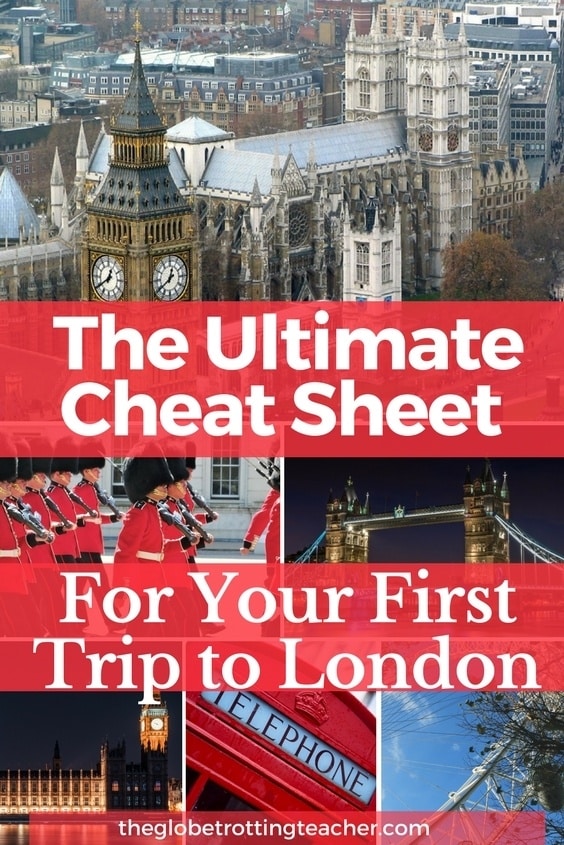Are you planning your first trip to London?
This global city is endlessly popular with travelers from all over the world. With its famous landmarks and iconic sights, the number of things to see and do in London can easily excite and overwhelm first-time visitors.
In this post, you’ll find a cheat sheet compiled over 3 separate visits to London packed with information about how to get to London from the airport, where to stay in London, how to get around once you arrive, and best of all, mapped-out London itinerary planning tips.
Are you ready to make your first trip to London a success?
How to Plan a Trip to London
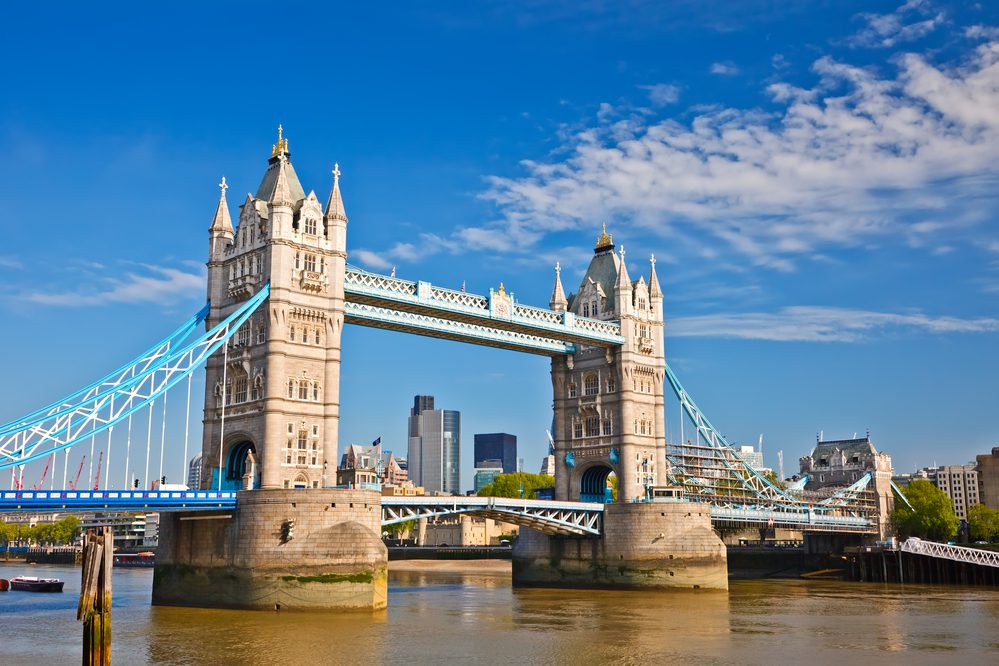
It can seem daunting to get started on your London trip plan. It’s a huge city with lots of iconic sights and experiences. In fact, I think it’s often underestimated by travelers who often write to tell me what a great time they had in London and that the city was such a surprise…in a good way!
So, as any good teacher will tell you, start with an outline. In this case, you want to break down each step you’ll need to do to plan a trip to London and then work on filling in all the details.
Start with deciding when you want to visit London and how many days you’ll stay. (I recommend at least 3-4 days.)
Once you know this, you can work on booking your London accommodations. (I recommend staying in a central-ish area within walking distance of a Tube station. Keep reading for more below) The further out you book your London hotel, the more available options you’ll have with competitive pricing.
ProTip: If you have flexibility, you might even look at London flights and hotels first to find the cheapest combination of dates and rates. In this way, you’re letting the deals decide when you travel versus looking for a deal on the dates you need/want to travel.
Once you’ve got the major logistics set, it’s time to work on your London itinerary. (I’ve got specific itinerary ideas below so keep reading!)
At this point in your planning a trip to London, you’ll want to make a list of the London sights and attractions that are your must sees and dos. Then, using the maps below (or Google Maps), start grouping them by area.
One really important thing to know as you plan your London trip is that the city is huge. The distances between places can be far, and with limited days, you don’t want to backtrack or plan activities on opposite ends of the city on the same day.
From here, figure out what can be booked ahead…and actually book it ahead! London is a popular destination. It’s normal for there to be lines at top sights and restaurants that are completely booked.
You can use sightseeing passes like The London Pass (my complete review) to pre-plan and save money. Or you can book individual tickets through a platform like Get Your Guide.
Once you know where you’re staying and what you’ll be doing each day, you can round out your London trip planning by looking at the Tube Map to orient yourself and decide how you’ll get from the airport to the city center. (More tips on this below!)
What to See and Do on Your First Trip to London
This London trip planner is set up in different sections to help you plan a trip to London from start to finish. The first part helps you get ideas about how to plan your days in London with landmarks, attractions, museums, markets, and activities in a logistically sensible way.
You want to maximize your time in London without backtracking or zigzagging around the city. These ideas can also help you piece together a complete day because not all of them require a full day.
You also note that I’ve included the Tube stops for individual attractions. This is to help you in case you visit these places outside of the order I’ve suggested in the Google Map for each itinerary idea.
After these itinerary ideas for planning your trip to London, you’ll find tips and helpful information so you can navigate the city confidently.
Are you ready to plan your trip to London?
London Itinerary Planning Idea #1 – History Buffs and Foodies
Tower of London – Tower Hill Tube Stop – Circle and District Lines
The Tower of London with its crown jewels is an absolute must with its thick, ominous walls, dark past, resident black ravens, and informative Beefeaters. The Tower and the nearby Tower Bridge sit stalwartly as a link to the past when Kings and Queens sent prisoners to “think” about their choices and to wait for the inevitable… execution.
The Tower of London was the inhospitable home to infamous gangsters, spies, Dukes, Bishops, Princes, and even Queens!
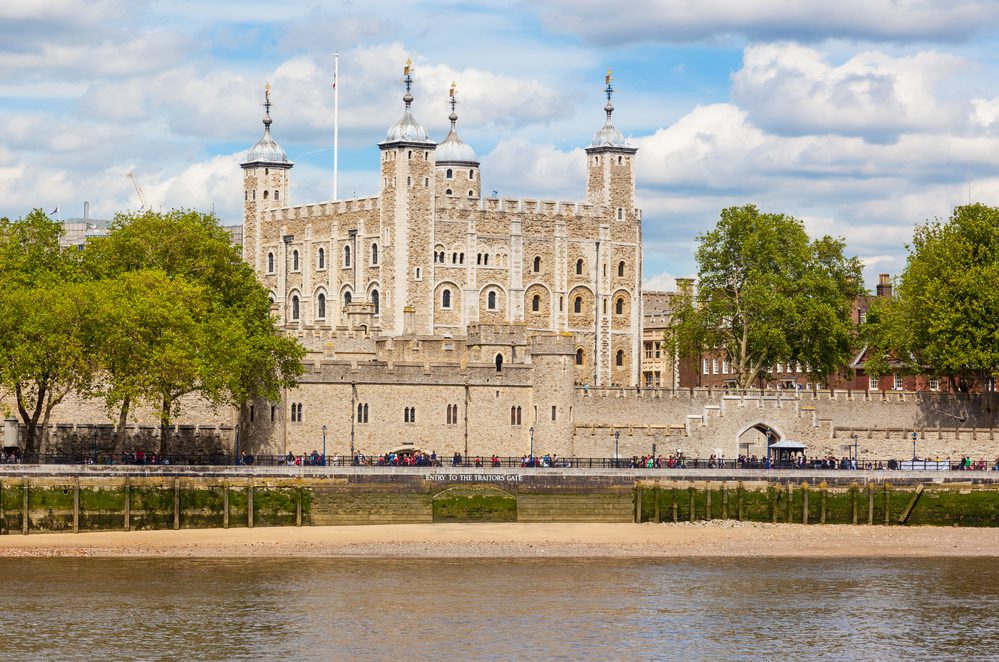
Undoubtedly the most famous Queen of them all was the ill-fated Anne Boleyn. The Tower of London is where Henry the VIII’s executioner beheaded her on charges of adultery and conspiracy, however, Henry actually blamed her for not producing a male heir.
Today, visiting the Tower of London is like stepping back in time. The daily traditions involving this historic castle have continued for hundreds of years. The resident Beefeaters live at the Tower of London and maintain the rituals and routines of the past. But they also offer free tours (once inside) and comically share their vast Tower of London knowledge.
These tours begin every 30 minutes starting at 10:00 a.m. and finishing with the last tour at 2:30 p.m.
Pro Tip: Arrive in the morning when the Tower first opens. It becomes quite crowded later in the day. Use your London Pass to get Fast Track Entry and bundled savings when compared to buying attraction tickets individually.
Tower Bridge & Borough Market – London Bridge Tube Stop – Northern and Jubilee Lines
After a morning at the Tower of London, time your escape for lunch at Borough Market. It’ll be easiest to walk from the Tower of London. Walk across Tower Bridge instead of London Bridge as shown on the map above. The walk is a bit longer than crossing London Bridge, but historic Tower Bridge is a sight in its own right.
You can tour the Victorian-era engine rooms, as well as climb to the bridge’s upper walkways for gorgeous views over London and the River Thames. Get your Tower Bridge ticket in advance or use The London Pass to visit the bridge.
You can also cross the River Thames with a river bus using your Tube Oyster Card (more on these below) from Tower Pier to London Bridge City Pier.
Once at Borough Market, the market lanes are lined with food and grocers selling every imaginable food item. It’s a great place to sample a variety of foods from all types of global cuisines. Not to mention, no London trip is complete without taking advantage of the city’s amazing international food scene!
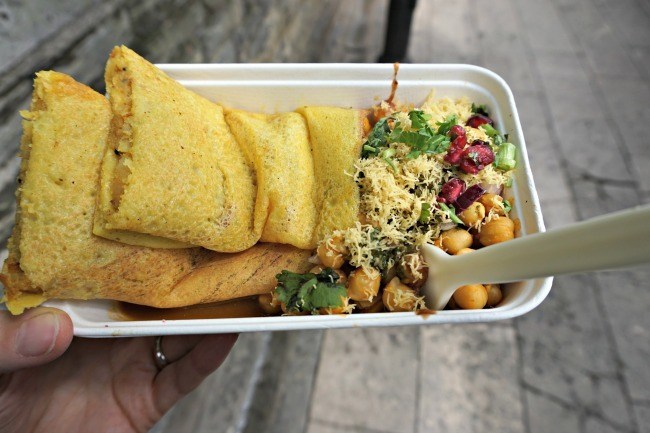
From famous falafel to perfectly spiced Indian food, huge skillets of paella, and savory British pies from Pieminster, you’ll be thankful to visit with an empty stomach on your first trip to London and every time you return like I do!
Restaurants and cafes fill the upstairs level and the surrounding streets (in case you’d prefer to sit rather than sample and roam) making this Southwark neighborhood a foodie’s delight.
ProTip: From Borough Market, you’re just a 5-minute walk to The Shard, London’s tallest glass skyscraper to see the highest views over the city.
If you have it, you can use your London Pass for access. Be sure to follow the pass instructions to pre-reserve a time.
London Itinerary Planning Idea #2 – Royalty and High Tea
Westminster Abbey – Westminster Tube Stop – Jubilee Line
Coming out of Westminster Station, you’ll immediately be in the shadow of Big Ben and London’s iconic Parliament Building. You can walk back onto the Westminster Bridge to capture fuller photos of these London landmarks. If you’re lucky, you just might get a classic shot with a red doubledecker bus!
Continue on to Westminster Abbey, just a couple of minutes walking from Big Ben. Westminster Abbey is open to visitors Monday-Saturday from 9:30 a.m until 3:30 p.m. The Abbey is closed on Sundays so keep this in mind when planning your London trip.
Use your London Pass to gain access to Westminster. Once inside, admire the architecture and the Abbey’s gorgeous choir room. Westminster is also the final resting place of numerous kings, queens, and dignitaries. You can see the monuments in their honor, as well as learn about their place in history.
If you’re a fan of the Royals, you’ll be visiting the spot where Kate and William were married.
Pro Tip: If you want to take a ride on the London Eye, it can be included with the stops you make in and around Big Ben because it’s just a short walk over the bridge you see in the photo below. Avoid the lines by choosing the fast-track ticket option.
It’s also quite popular to depart from the Westminster Pier for a cruise along the River Thames to take in the sights of London from the water.
History buffs won’t want to miss the Churchill War Rooms. They’re not far from Westminster Abbey, along the edge of St. James’s Park. These rooms served as the secret headquarters for Churchill during WW2. The rooms have been preserved just as they were during the war and give a fascinating look at how Churchill operated and made decisions during this dark time in history.
If your trip to London is 3 days or less and it’s your first visit, this WW2 museum may not be a top priority. But if you or a travel companion is interested in visiting WW2 sights and museums in Europe, The Churchill War Rooms are a great way to divert from the typical first time in London sights.
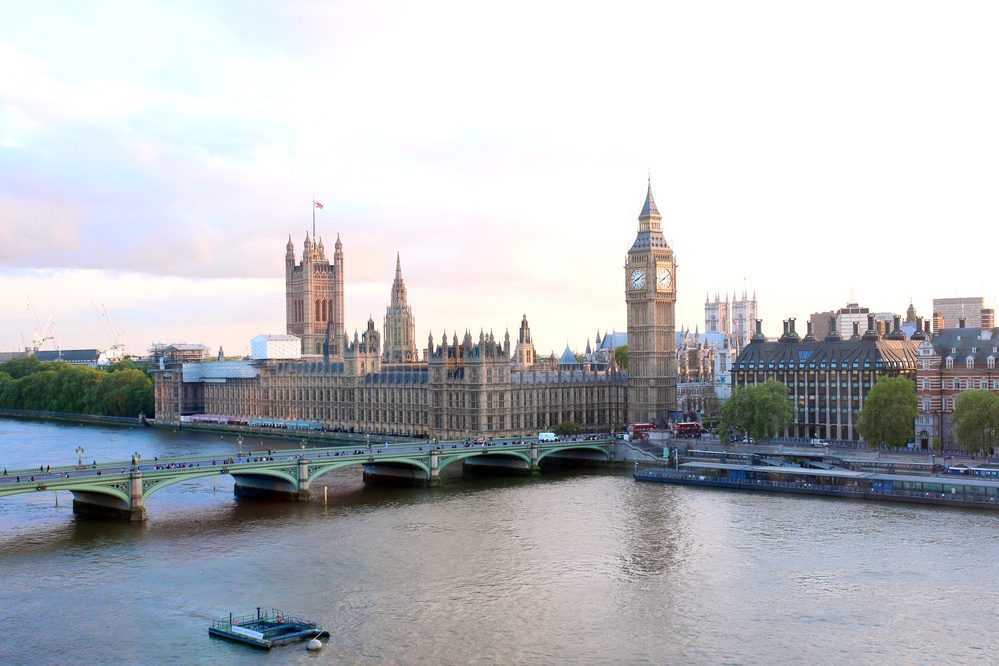
Buckingham Palace-Green Park Tube Stop-Jubilee, Victoria, & Piccadilly Lines
Next, make your way to Buckingham Palace where the Changing of the Guards happens.
The ceremony is all pomp and fanfare. The King’s Guard outside the castle has been on watch for hours and the new guard comes to take over in grand style! A marching brigade of guards along with a mounted cavalry and a marching band head up The Mall and through the palace gates.
This ceremony draws a crowd so it’s best to arrive ahead of time so that you can get yourself in a position to see the fanfare. I’ve watched from both the gates of Buckingham Palace and the Queen Victoria Monument directly opposite the palace gates.
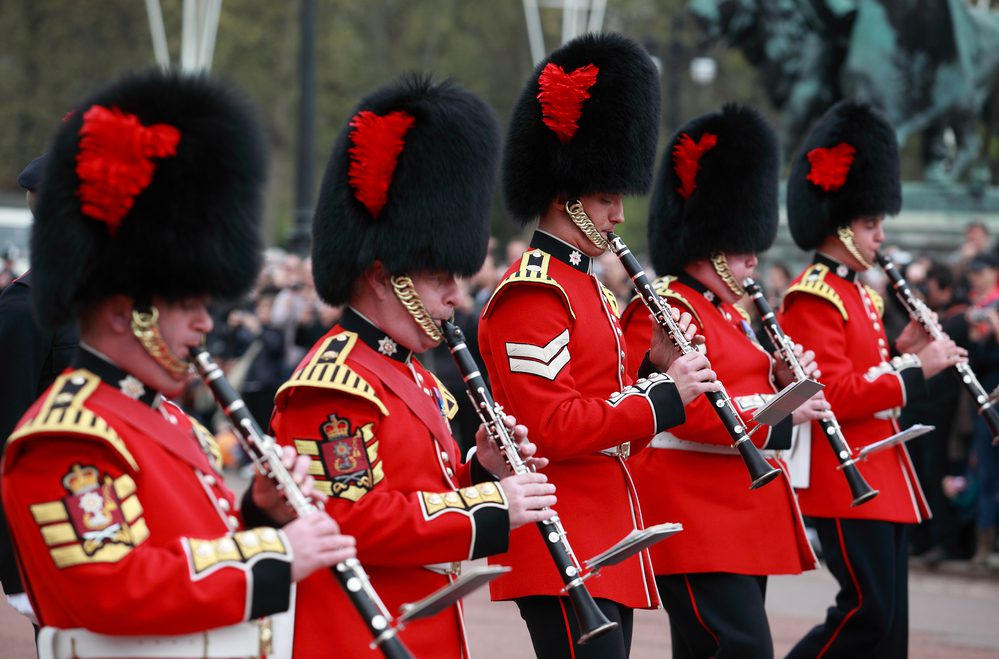
You’ll have to choose the location you want because it’s typically too crowded to move from place to place. To get a spot along the fence at Buckingham Palace, be prepared to arrive up to an hour early and wait.
If this is the case, you also may need to reverse the order and visit Westminster Abbey after so that you can stake out your Changing of the Guard spot in the morning.
Pro Tip: Check the Changing of the Guard schedule before you go to make sure the ceremony is planned for the day you intend to visit.
Hyde Park – Hyde Park Corner Tube Stop – Piccadilly Line
When the ceremony is finished, keep those royal juices flowing for a stroll around Hyde Park. It’s one of the largest parks in London, as well as one of the Royal Parks. Enjoy its monuments, bridges, fountains, gardens, and lake, including the Princess Diana Memorial Fountain.
Finish up with a classic afternoon tea experience at The Dorchester Hotel.
No doubt, it’s a luxurious splurge, but after having experienced life as a royal, it’s the perfect way to properly finish the experience. From finger sandwiches, scones with clotted cream, sweets, and of course, tea, you’ll have had a quintessential London outing.
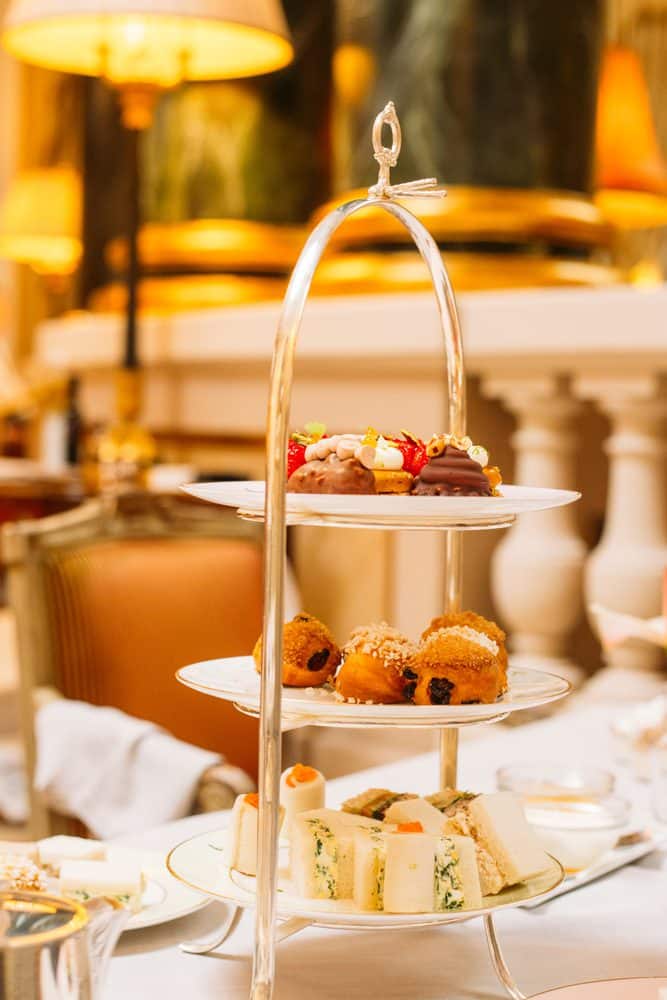
Alternatively, if you plan afternoon tea for another day, you might want to visit London’s Natural History Museum or Kensington Palace on the other end of Hyde Park.
The latter has been a royal residence for hundreds of years and was where Princess Diana lived with Princes William and Harry. Today, you can tour the apartments and staterooms and see the sunken gardens where there is a statue of Princess Diana commemorating the 20th anniversary of her death.
While the Natural History Museum displays animal specimens, dinosaurs, and exhibitions about the history of the natural world and the people who evolved in it.
If you intend to walk into Hyde Park and casually make your way towards Kensington Palace or the Natural History Museum, the walk will be broken up by the time spent in the park.
Otherwise, if your aim is to get to either of these sights without a long walk, use the London underground. The Queensway stop along the Central line is the closest to Kensington Palace and the South Kensington stop along the Circle and District lines is near to the Natural History Museum.
London Itinerary Planning Idea #3 – Architecture, Theatre, & Art
St. Paul’s Cathedral – St. Paul’s Tube Stop – Central Line
Start off at St. Paul’s Cathedral to admire this Anglican Church’s architecture. You can explore the crypt or head in the opposite direction and climb the dome’s 528 steps for spectacular panoramic London views.
If you have it, entry is included with your London Pass.
Take your time crossing the pedestrian-only Millennium Bridge on your way to the Tate Modern and Shakespeare’s Globe Theatre. This is a great spot to watch boat traffic along the River Thames.

Tate Modern & The Globe Theatre-Blackfriars Tube Stop-Circle & District Lines
These 2 London attractions are just next to one another.
The Tate Modern has a vast permanent collection of modern art by the likes of Henri Matisse and Jackson Pollock, as well as temporary exhibitions. There are beautiful views looking back on St. Paul’s Cathedral and the River Thames, as well.
It’s free to enter the museum and there’s no need to book ahead, unless there is a specific exhibit you’d like to see that requires a reserved space.
The nearby Globe Theatre is a replica of Shakespeare’s original which burned in a fire many years ago after the thatched roof was ignited during a production of Henry VIII.
For your first trip to London, you’ll want to use your London Pass to tour the theater during the day and hear about its historic past. The Globe also has evening performances during the spring, summer, and fall seasons. The ambiance of the open-air theater makes for a fantastic night out!
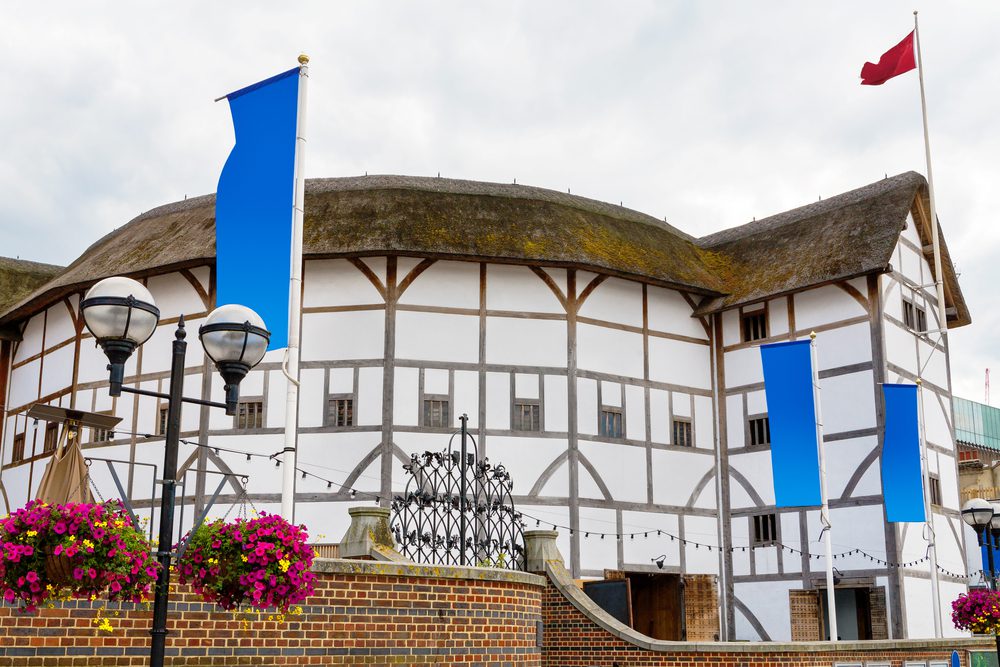
Pro Tip: Check times to coordinate visits to both the Tate Modern and The Globe in a way that lets you see one after the other. The Globe performance tickets sell out so purchase them in advance, especially if you want to see a play on a specific date.
London Itinerary Planning Idea #4 – Artifacts, Landmarks, and Shopping
The British Museum – Tottenham Court Tube Stop – Central & Northern Lines
No trip to London is complete without a stop at The British Museum. The art and artifacts on display are open free to the public beginning at 10:00 a.m. each day. Highlights include the Rosetta Stone, sculptures from the Parthenon, and a vast Egyptian collection including mummies.
It’s worth checking for any special, limited-time exhibits during your stay. If there’s one you’d like to see, it’s worth buying tickets online or at the museum when you first arrive.
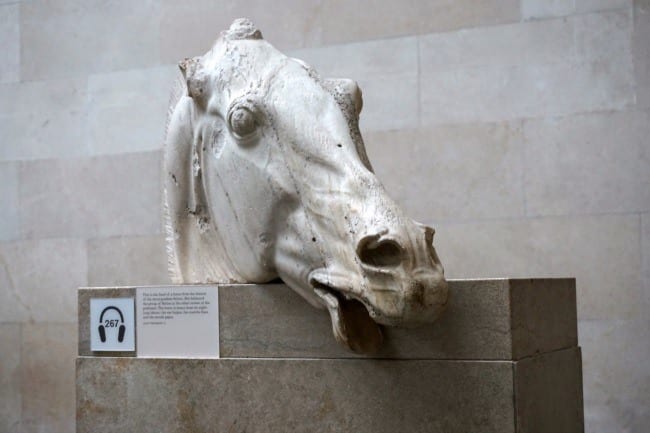
After the museum, spend the afternoon strolling through Covent Garden or head over to Soho and Oxford Street for a shopper’s paradise. Covent Garden is in London’s West End, home to theaters, restaurants, and shops. You’re sure to find anything you’d want to buy from the numerous chain stores, boutiques, and markets.
Pro Tip: There are many classic London pubs in these neighborhoods. If you haven’t had a plate of fish and chips yet, now’s the time. You can also join a historical pub walking tour to visit some of London’s most iconic pubs.
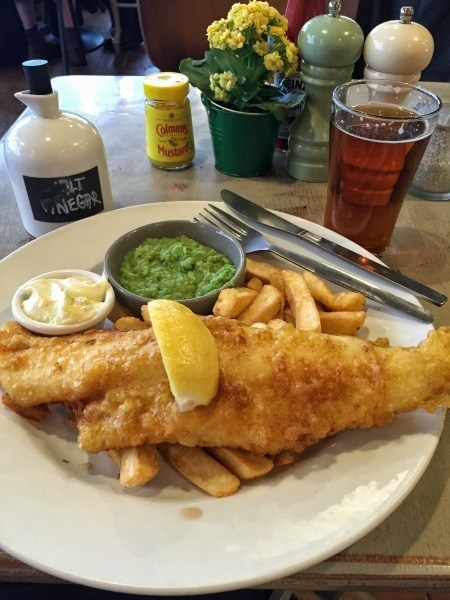
Leicester Square – Leicester Square Tube Stop – Piccadilly & Northern Lines
Make your way to Leicester Square and the heart of London’s Theatre District. It’s super touristy here. Think Times Square-esque…a place where you take a few photos before moving on.
But if you plan to see a musical or a play later (and you certainly should!), get your discounted tickets at the TKTS booth right in the square for performances that day or night.
There’s crossover between shows in London and New York’s Broadway district. Sometimes, you can even catch a performance in London before it heads to New York City.
Trafalgar Square – Charing Cross Tube Stop – Bakerloo & Northern Lines
Finish your walk at Trafalgar Square. This iconic London crossroads has monuments, historic buildings, museums, and street performers. It’s an absolute beehive of activity and perfect for taking more classic London photos complete with red double-decker buses passing by on the streets in and around the square.
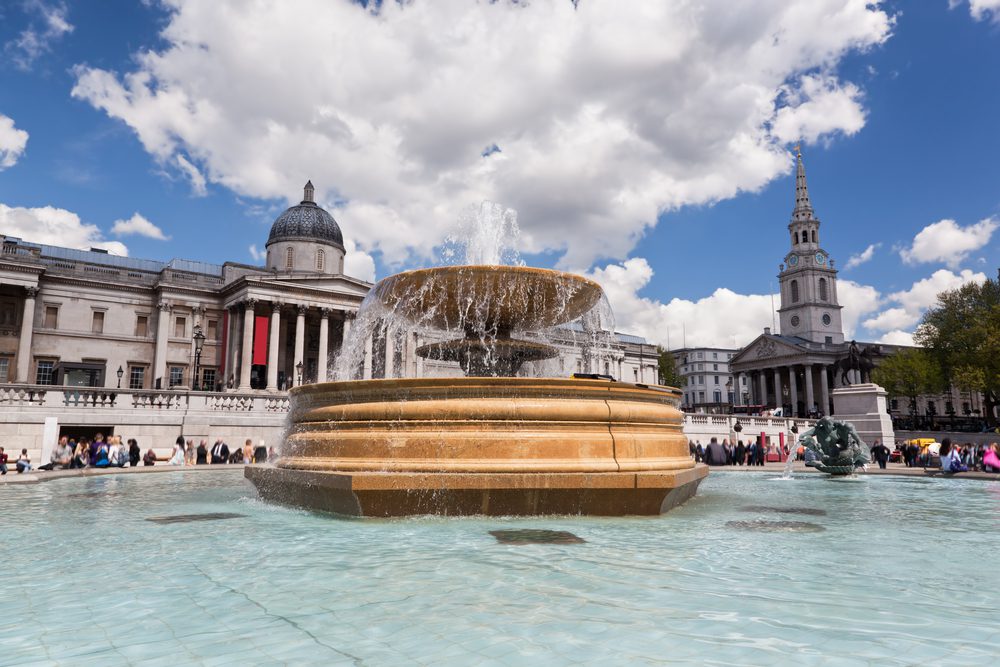
With any luck, you’ll have time to check out the National Gallery right in Trafalgar Square which houses famous paintings by the likes of Vermeer, Monet, Rembrandt, Cezanne, and Leonardo Da Vinci.
Best of all, it’s free to visit, and you can use your London Pass Hop On Hop Off double-decker bus ticket to reposition yourself closer to your hotel when you’re done.
London Itinerary Planning Idea #5 – Harry Potter Fans
Harry Potter Studio Tour Meeting Point – Victoria Station – Circle, District & Victoria Lines
Are you traveling with a wannabe wizard dying for a Hogwarts adventure?
Plan a visit to the Harry Potter and Warner Brothers Studio. Buses leave from Central London and travel to the magical sets of the famed movie and book series. The closest tube stop to the meeting point is Victoria Station. From there, it’s just a few minutes on foot.
You’ll have 4 hours to see places like the Great Hall, Dumbledore’s Office, Diagon Alley, and more! Plus, get to see some of the most famous props and the costumes worn by Harry, Ron, and Hermione.
If you’ve wanted to visit Platform 9 ¾, ride the Hogwarts Express, and attempt to ride a broomstick, then you definitely don’t want to miss escaping the world of Muggles for just a bit on your visit to London!
ProTip: If you want to sprinkle some Harry Potter into your London trip but don’t want to commit a full day to the experience, this Harry Potter Guided Walking Tour is a popular alternative.
Out-of-Town Must-Sees on your First Trip to London
From London, many parts of Britain and the U.K. are easily reachable by train. This makes it possible to visit a couple of popular sites with even just a half day’s worth of time.
Trains run from London to both Windsor Castle and Hampton Court Palace. From their respective train stations, it’s just a few minutes on foot to reach the entry points.
The exquisite staterooms at Windsor Castle are open to the public when the King is not in residence. These rooms are some of the most spectacular castle rooms you’ll see anywhere in the world.
St. George’s Chapel, within the grounds of Windsor Castle, is the final resting spot of Henry VIII and several other Kings and Queens. It’s also where Meghan and Harry were married and the final resting place of Queen Elizabeth II.
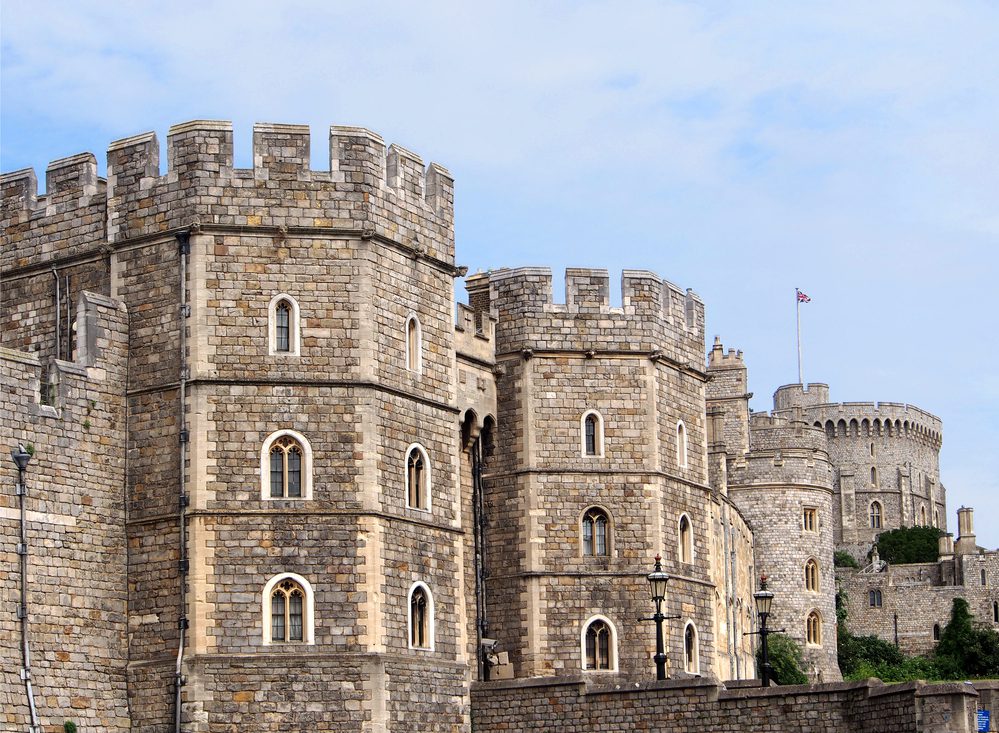
Hampton Court Palace is full of Tudor history, as it was a regular stop for Henry VIII and his royal court. The palace creates a historical experience by revealing the inner workings of how the palace operated in its heyday. It’s undoubtedly one of the most interesting and well-preserved looks at Tudor history, as well as what life was like during this period.
Look out for King Henry VIII himself, as visitors can watch the King interact with Anne Boleyn or flirt with his soon-to-be next wife, Jane Seymour. Leave some time for the palace’s gardens and maze.
Pro Tip: Windsor Castle and Hampton Court Palace are both included with the London Pass. Get Fast Track Entry at Hampton Court to maximize your time and avoid any entry line.
If you have extra days in your itinerary, consider a London day trip to:
- Windsor Castle, Stonehenge, and Bath
- The Cotswolds
- Highclere Castle (Downton Abbey) & the Filming Locations
If you’re planning a trip to England, rent a car and drive into the English countryside when your time in London is done. I’ve done this to spend time exploring places like Stratford-Upon-Avon, the Cotswolds villages, and Warwick Castle.
It’s a perfect way to add on to an England itinerary and explore more of what the country has to offer beyond London.
Best Area to Stay in London
Where to stay in London is one of the most frequently asked questions for anyone planning a trip. It’s understandable. You want to be somewhere conveniently located, safe, and within your travel budget.
London’s neighborhoods and districts each have their own unique charm and flavor. And while some might say you should absolutely stay in the heart of the most touristy areas of the city, I think the most important thing when choosing where to stay in London is to stay somewhere with convenient access to the Tube.
You shouldn’t be hesitant to book a hotel or rental accommodation that’s a few Tube stops away from popular attractions. You can truly get nearly anywhere in London very quickly by using the underground train system.
That being said, you don’t want to stay too far from the heart of London, either. The city is big and the Tube rides from London’s outer neighborhoods can take upwards of an hour back to the center.
Ideally, you want to find a London hotel that matches your travel budget, close to a Tube station, in a relatively center-ish location. Example neighborhoods include Seven Dials, Covent Garden, Westminster, Soho, and near Southwark along the south bank.
Below, I’ve shared a couple of hotels where I’ve stayed. They’re in different budget categories and neighborhoods, and they have convenient Tube access.

I’ve had excellent hotel points and paid stays at several London hotels including the ones listed below.
Radisson Blu Edwardian Mercer Street Hotel – The hotel is located in the Seven Dials neighborhood near Covent Garden, the West End’s Theatre district, pubs, and my favorite Indian restaurant, Dishoom. Rooms are a classic modern boutique style for which Radisson Blu hotels are known.
Holiday Inn Express London-Southwark – Just a 10-minute walk to Borough Market, the Tate Modern, or the Globe Theatre, with a Tube station nearby. This hotel is on the south bank of the city not far from the Southwark Tube station.
London Rental Accommodations
During my travels, I’ve also opted for apartment and home rentals. You feel more like a local and oftentimes can save money because you’re able to prepare your own breakfast or share the overall cost with family members or friends. Not to mention, you can find truly unique places to stay with awesome views or even discover a new neighborhood!
London is the perfect destination to consider a rental accommodation over a hotel because hotels aren’t cheap(!) and London is well-connected with its underground trains.
My go-to place to search for rental accommodations is Plum Guide. They vet the properties on their site using “Home Critics” and only select the best properties in a variety of price brackets. Plum Guide even offers phone support 24/7 should you need any help or have questions.
How Many Days to Spend in London
As with most places, you can spend an extended period of time and still not see and do everything a fantastic city like London has to offer.
If it’s your first time in London, you likely will focus on the most popular attractions and experiences that interest you. For this, you’ll need 3-4 days to explore and make use of the London itinerary ideas in this guide.
With 4+ days in London, you can also use a day to visit a popular sight just outside of London or even get off the beaten path.
London is a great city to explore. It’s also the perfect jumping-off point for future trips to Europe. It’s not complicated to add a couple of days in London as a stopover before continuing on to another destination in Europe.
Arrival into London
The Heathrow Express is a quick and efficient way to get into the city from London Heathrow Airport. The train leaves every 15 minutes and arrives in just about the same time to Paddington Station.
You can book your tickets online or using the Heathrow Express App. Not only will this save you any hassle at the airport, but you’ll also save money. Heathrow Express prices are lower the further you book in advance.
Gatwick Airport also has an express train which arrives at Victoria Station. Trains run every 15 minutes and take a half-hour to reach London.
Similarly, the express train from Gatwick offers considerable discounts for booking online and ahead of time.
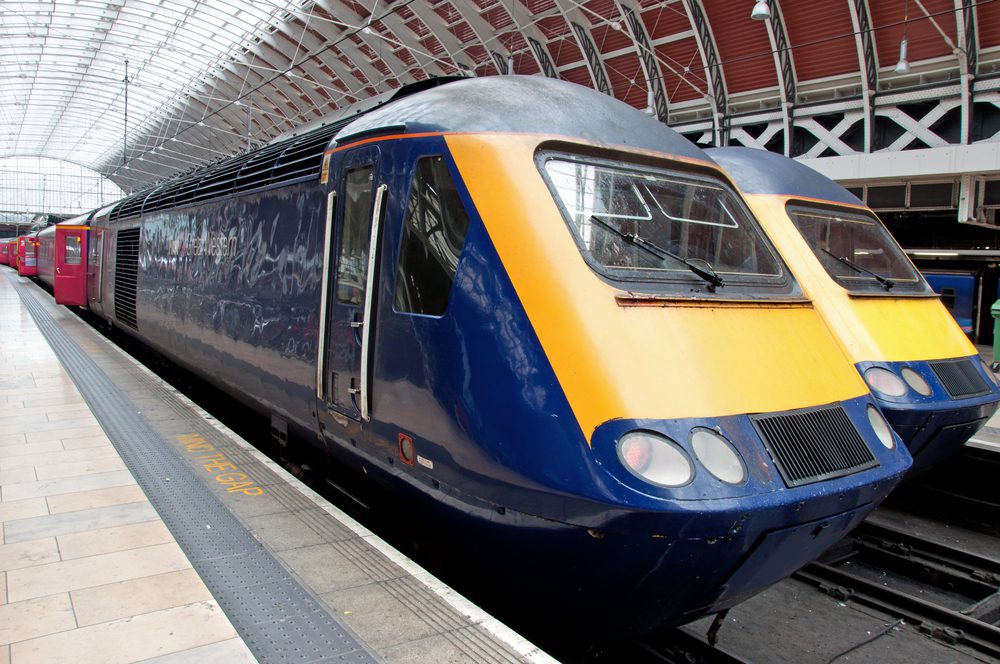
The airports also have commuter trains, buses, and taxis to get you into London. Except for the taxis, these options are less expensive than the express trains mentioned above but do take more time.
You can check prices and schedules for Southern Railways from Gatwick to compare.
In addition, from London Heathrow, you can take the Tube. Trains along the Picadilly and Elizabeth lines connect terminals 2, 3, 4, and 5. The ride takes between 45-50 minutes to reach central London but is less expensive than the Heathrow Express.
From Paddington and Victoria Stations in London, you’ll have access to the London Tube with lines spreading across the city, as well as a taxi queue at ground level. Most taxis take credit cards but be aware of the occasional cash-only sign in a taxi’s window.
Pro Tip: My recommendation is to use an express train or the Tube (from/to Heathrow), for a quick and easy trip to London’s city center or even directly to your hotel. Avoid London traffic and expensive taxi rides.
If you’d prefer to arrange transportation and/or avoid taking the trains, consider booking a car with Welcome Pickups to transfer to the city. Although I’ve only used the trains to get from Heathrow to London, I’ve used Welcome Pickups in several other European cities and always had a great experience.
This will be a much more affordable option compared to a London taxi. The price will be a flat rate, as opposed to paying based on the taxi’s metered fare which can get quite high with even the smallest amount of traffic
How to get around London
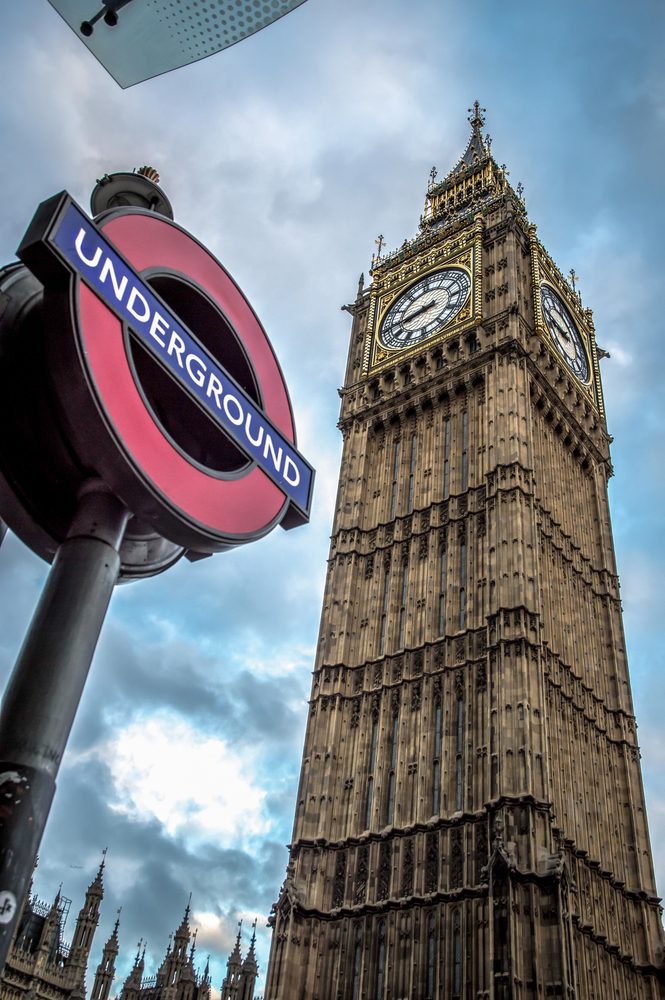
London is very pedestrian-friendly and you’re bound to do a good amount of walking during your London trip. Remember, cars are on the opposite side of the road compared to the U.S., so you need to LOOK RIGHT when crossing the road. When in doubt, just look both ways before crossing.
Along the Thames, the riverwalk is a clear path connected with several bridges to help you cross to the other side as frequently as you need.
In addition, London’s Tube (subway) is reliable, easy to navigate, and stretches across the city. The announcements are clear and the lines are identified with colors and names, like Central, District, and Piccadilly. Given how big London is, you’ll need to rely on public transportation to maximize the time you have rather than always walking long distances.
As with getting to London from the airport, taxis are expensive in London and get even pricier when traffic is heavy. It’s best to go underground to save time, money, and patience.
Visitors staying for a few days can get an Oyster Card for easy use and refills in the Tube. Your Oyster Card is good for your first trip to London and every return trip thereafter!
London Pass purchases come with the option to add a visitor’s Oyster Card. I would skip this option because the card takes several weeks to be physically mailed to you. You can also save more money by simply using a regular Oyster Card or the Tube’s contactless payment system because it will cap how much you’ll pay each day automatically.
Use a contactless credit card to pay to enter the Tube, as well as a mobile device like a smartphone with Apple Pay, Google Pay, or Samsung Pay. Just be sure you’re using a card with no foreign transaction fees.
A few things to keep in mind when paying to access the Tube.
- Use the same card or device when you touch in and out at the yellow card readers. The London Tube caps how much you’ll pay. So, you can ride as much as you want in a day or a week and you’ll never pay more than the capped price.
- If you don’t use the same card or device, the Tube card readers won’t be able to accurately cap the amount you pay.
- If you’re using a device like a smartphone, be sure you have enough battery power. You need to touch in and out of the Tube. You also need to use your phone all day otherwise the system can’t cap the amount you pay.
- You can pay for another person if you are traveling together. (They will need to touch out of the Tube and can’t do it without your card or device.) You’ll need to pay for yourself with a separate card or device.
London Tips for Your First Trip
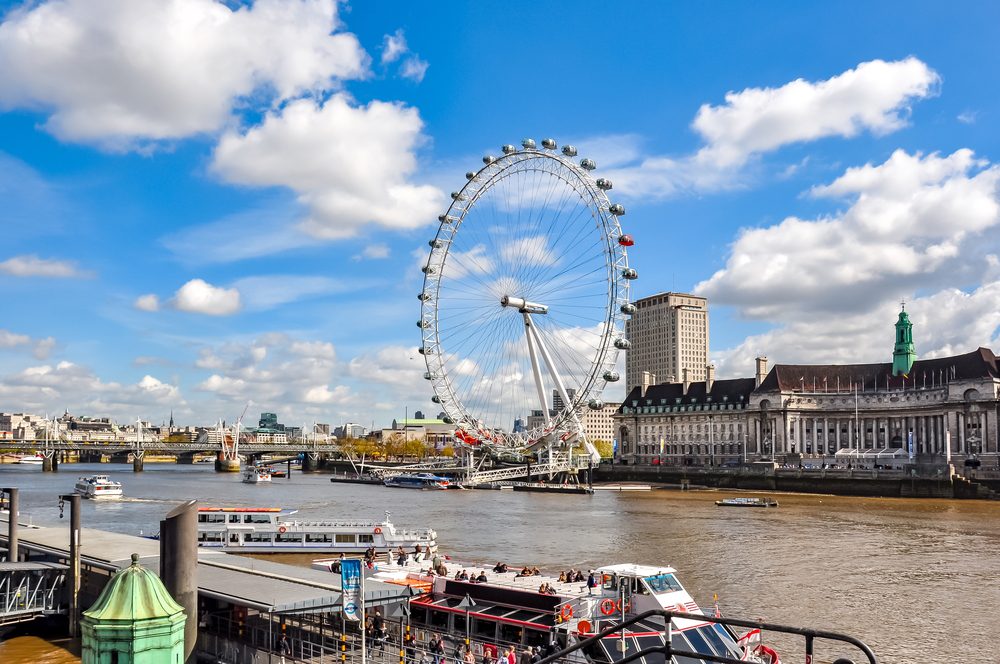
As you plan things to do in London and where to stay in London, also take into consideration the tips below. They’ve come from 3 separate trips to London and a lot of travel experience overall.
The best time to visit London is during spring and fall.
Visiting London in the shoulder/winter season months, April-June and September-November, are the perfect combination of moderate to cool temperatures and fewer visitors. January to March can also be a good time to visit if you’re not bothered by colder temperatures and prefer to visit during the least busy time of year.
Summer can be very busy, making the next London travel tip even that much more important.
Book as many things as possible in advance.
Not only will things like the London Pass or advance fast-track tickets help you save time and money, but it’ll eliminate indecisiveness about what to do while you’re in London and who to trust when you eventually buy the tickets, tours, and passes you want.
Use a credit card with no foreign transaction fees.
London isn’t a budget destination. The last thing you want to add to the currency exchange are fees from your credit card once you get your bill back home.
Credit cards are widely accepted throughout London and also remove the necessity to convert and carry large amounts of dollars to British pounds.
ProTip: When paying by credit card or using your debit card to withdraw money at an ATM, always pay in the local currency (Pounds) and/or decline the currency conversion. This is a sneaky way to convert your money at a less-than-desirable rate.
Wear comfortable walking shoes.
I know this seems obvious but it truly can’t be understated. As someone who lives in New York City, I can always recognize a visitor who’s regretting his/her shoe choice.
These are the most comfortable shoes I’ve ever worn. I wear them walking around New York City and they’re a staple I pack for nearly every trip I take. You can walk miles without any irritation or blisters.
Check for service charges.
Tipping isn’t obligatory in London. In fact, service charges are often added to bills at restaurants and pubs. That being said, if you’re happy with your service, you always leave a small amount as a gesture of appreciation.
Pack the right electrical converters.
Most commonly, you’ll need a Type G converter to plug into the outlets throughout the U.K. I’ve encountered one place where this wasn’t the case. So, it’s smart to also have a universal adapter with USB ports, too.
London Trip Planner FAQs
To plan a trip to London, first, decide how many days you’ll spend in the city. Then, book your hotel. You’ll find more options and competitive pricing the further in advance you book. After this, plan your London itinerary. Make a list of the sights and activities you want to see and do. Then, group them by area to logically plan what to do without backtracking. Be sure to book ahead as many things as possible to save time and to ensure you can visit places on the days that make sense for your London itinerary.
As you plan a trip to London, you’ll need at least 3-4 days to comfortably see the city’s top sights and attractions. London is a very large city with an endless number of things to see and do. You can easily plan a trip to London for a week and have plenty to fill your itinerary.
The absolute best months for a perfect combination of weather and number of visitors is from April to June and September through November. January to March can also be a good time to visit London because fewer people are visiting during this time. Summers come with big crowds and long lines.
The best area to stay in London is in the heart of the city, especially if you’re visiting London for the first time, and within walking distance of a Tube station. These include neighborhoods like Seven Dials, Covent Garden, Westminster, Soho, and along the south bank near the Southwark area.
For your first London trip, plan to see the Tower of London, Tower Bridge, the British Museum, Covent Garden, Westminster Abbey, St. Paul’s Cathedral, Buckingham Palace, and the iconic view of Big Ben and Parliament from Westminster Bridge. You should also plan to have afternoon tea, eat at Borough Market, go to a play or musical, and glimpse London from above at the London Eye or the Shard.
First Trip to London – Bottom Line
You have chosen a fantastic city to visit, full of important landmarks, historic sights, good food, and fun experiences. With some advance planning, you’ll arrive in London prepared with your itinerary and know-how to navigate the city confidently for an unforgettable trip.
So, what questions do you have about your first trip to London or about planning a London itinerary?
Like this post? Please share it on social media using the share buttons below!
